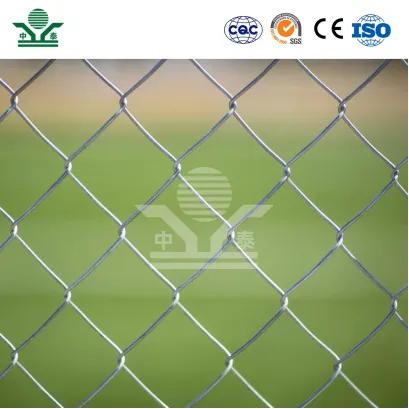Understanding Expanded Metal Mesh Standard Sizes and Applications
Expanded metal mesh is a versatile material commonly used across various industries due to its strength, lightness, and excellent airflow properties. This unique product is made by cutting and stretching a sheet of metal, creating a mesh of interconnected strands, which often resembles a diamond or hexagonal pattern. Understanding the standard sizes of expanded metal mesh is essential for selecting the right product for your needs, whether for construction, industrial applications, or aesthetic purposes.
What Is Expanded Metal Mesh?
Expanded metal mesh is created from a solid sheet of metal that is cut and expanded through a process known as expansion. This technique allows for the creation of a mesh that retains much of the strength of the original material, while also offering various benefits, such as reduced weight and increased airflow. The openings in the mesh allow for light, air, and liquids to pass through while maintaining structural integrity.
Standard Sizes of Expanded Metal Mesh
Expanded metal mesh comes in a variety of standard sizes, which can be categorized by the thickness of the sheet, the size of the diamond or hexagonal openings, and the overall dimensions of the sheets. Common materials for expanded metal include aluminum, stainless steel, and carbon steel, each offering different strengths and corrosion resistance.
1. Thickness The thickness of expanded metal sheets can vary significantly, typically ranging from 0.5 mm to 6 mm. Thicker sheets provide greater durability and strength, making them suitable for heavy-duty applications, while thinner sheets are lighter and more flexible.
2. Mesh Opening Sizes The size of the openings can vary widely depending on the application. Common opening sizes range from 1/2 inch to 4 inches. Larger openings are usually employed in fencing or as safety barriers, while smaller openings can be used for filtration or decorative purposes.
3. Sheet Dimensions Standard sheets of expanded metal vary in size as well. Common dimensions include 4' x 8', 3' x 10', and 2' x 2', but custom sizes can also be manufactured to meet specific project requirements.
expanded metal mesh standard size

Applications of Expanded Metal Mesh
The applications of expanded metal mesh are vast, and its uses can be seen in numerous sectors
1. Construction Architects and builders utilize expanded metal in construction for reinforcement, infill panels, or even decorative elements. It is often used as a light but durable material in ceilings, flooring systems, and wall cladding.
2. Industrial In industrial settings, expanded metal is frequently used for security applications, such as fences, grates, and covers. The open structure allows for visibility, airflow, and light while providing a deterrent against intruders.
3. Automotive In the automotive industry, expanded metal mesh is employed for grilles, heat shields, and protective barriers. Its properties help enhance both the functionality and aesthetics of vehicles.
4. Aesthetic Design Artists and designers often use expanded metal mesh to create modern art installations, decorative screens, and architectural features. The geometric patterns can add an intriguing visual element to both indoor and outdoor spaces.
Conclusion
Expanded metal mesh is a highly functional material with numerous standard sizes and applications that cater to a broad range of industries. Understanding its different specifications is crucial for optimal use in construction, industrial environments, and creative projects. With its excellent durability, lightweight nature, and aesthetic potential, expanded metal mesh stands out as a preferred choice for many professionals seeking reliable and versatile materials. Whether you are designing a structural component or embarking on a creative endeavor, exploring the various types of expanded metal mesh can help you make informed decisions for your projects.
-
Why Galvanized Trench Cover Steel Grating Resists Corrosion
NewsJul.10,2025
-
The Versatility and Strength of Stainless Expanded Metal Mesh
NewsJul.10,2025
-
Load Calculations in Steel Grating Platforms
NewsJul.10,2025
-
Keeping Pets and Kids Safe with Chicken Wire Deck Railing
NewsJul.10,2025
-
Hole Diameter and Pitch for Round Perforated Metal Sheets
NewsJul.10,2025
-
Aluminium Diamond Mesh in Modern Architecture
NewsJul.10,2025
Subscribe now!
Stay up to date with the latest on Fry Steeland industry news.

